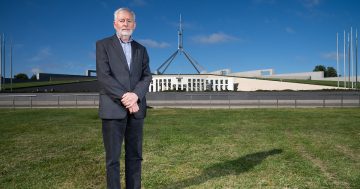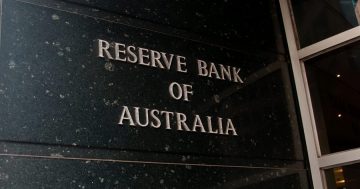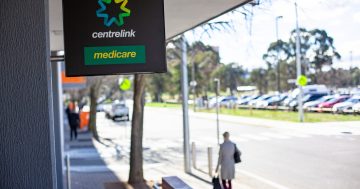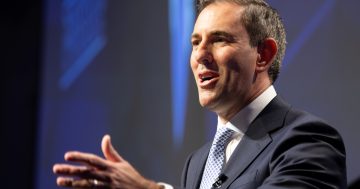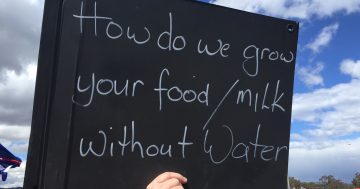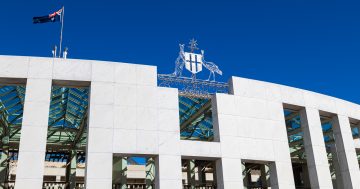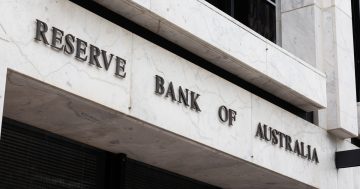Emilia Terzon* says Australian mortgage holders are headed for another series of interest rate hikes.
 Inflation rose again in November, according to the latest Australian Bureau of Statistics (ABS) figures, prompting forecasts of further interest rate hikes in 2023.
Inflation rose again in November, according to the latest Australian Bureau of Statistics (ABS) figures, prompting forecasts of further interest rate hikes in 2023.
The monthly consumer price index (CPI) rose 7.3 per cent over the year to November, which was back up from 6.9 per cent in October to the same level recorded in September.
The rate of inflation is the main factor the Reserve Bank of Australia has been taking into consideration when deciding how fast and far to lift interest rates.
ABS head of prices statistics, Michelle Marquardt, said the latest monthly data showed there were still ongoing inflationary pressures in the economy.
Housing, which incorporates the cost of building a new home and rental prices, was one of the biggest contributors, with a gain of 9.6 per cent over the past year.
Ms Marquardt said high labour and materials costs contributed to this, however there were signs the inflationary pressures in housing were easing.
Food, fuel and travel lift inflation
The data showed the price of food and non-alcoholic beverages jumped 9.4 per cent.
Takeaway food and dining out were key drivers of the rise.
“Increasing operating costs, including wages, electricity, and weather affected reductions in food supplies continued to drive prices up,” Ms Marquardt said.
Soren Risby works in a grocery store and postal outlet in Hobart that is battling rising prices.
“It’s a reasonably small business,” he said.
“The option to swallow profit margins just isn’t really something we can tolerate or absorb comfortably.”
Mr Risby said it came at no surprise to them that the sub-index for grocery items rose in November, and that West Hobart Express had actually been trying to hold off hiking prices on everyday groceries pre-Christmas.
“We’ve tried to hold off as best we can until the new year, and now it’s starting to ramp up again,” he said.
He therefore expects grocery price inflation to get worse before it gets better in 2023.
Mr Risby said items that had been rising in price in early 2023 from his suppliers included avocados and potatoes.
“That’s a result of the weather we’ve had, including the very wet spring,” he told ABC News.
The retail worker noted that some suppliers of chocolate and packet crisps had not been increasing prices, but had instead been reducing the amount of product inside packages.
This is an example of the economic phenomenon, shrinkflation.
“They’ve kept the prices the same, but they’ve removed grams off the packs,” Mr Risby said.
In the store’s postal service section, Mr Risby said the cost of stamps had gone up by 10 cents, as flagged by Australia Post late last year.
Australia’s economy has been dogged by rising power prices, which are linked to the war in Ukraine, along with soaring petrol and diesel costs.
The former Australian government had cut the fuel excise temporarily for six months to help with this pressure on the economy.
The fuel excise was restored to its original level on September 29 last year.
The ABS’ Michelle Marquardt said this was showing up in the November data.
“In the transport group, we saw some flow-on impact from the restoration of the Australian Government’s fuel excise in November’s higher automotive fuel prices,” she said.
“These rose 16.6 per cent in the year to November up from 11.8 per cent in October.
“Average prices for unleaded petrol peaked at just over $2 in early November before falling to just under $1.80 by the end of November.”
Ms Marquardt said climbing fuel prices also contributed to the rising price of travel, including flights.
ABS data usually shows a drop in holiday and travel costs in November as the school holiday period ends, however this month bucked the trend.
In fact, November’s annual rise of 12.8 was the second highest for this sector in almost five years.
“High jet fuel prices combined with strong consumer demand in November pushed airfare prices up, with accommodation prices also rising,” Ms Marquardt said.
Inflation rebound likely to lock-in interest rate rises
This data set that the ABS publishes is a new rolling monthly series on CPI that was brought in as inflation soared in 2022.
The longer-running quarterly data set, which includes a wider assortment of items to calculate the CPI figure, is due out in two weeks — just in time for the Reserve Bank’s first meeting of 2023.
The RBA next meets on February 7 to decide whether to lift the cash rate again.
It is currently at 3.1 per cent, which is its highest level in the decade since November 2012, when it was 3.25 per cent.
Capital Economics analyst Marcel Thieliant said borrowers can expect further rate increases this year.
“The renewed rise in inflation in November coupled with strong retail sales data will prompt the Reserve Bank of Australia to press ahead with another 25-basis-point rate hike at its February meeting,” he predicted.
“The continued strength in inflation coupled with the resilience in consumption will prompt the RBA to keep hiking rates for a while yet.”
ANZ senior economist Adelaide Timbrell believes the risk is increasing that the RBA will have to hike the cash rate above 4 per cent.
ANZ is currently tipping that the RBA will boost the cash rate by 0.25 per cent at its February meeting, and that it will then opt for two more rate hikes up to May, leaving the cash rate at 3.85 per cent.
“But if the data continues to surprise upwards (then) the risk of 4.1 per cent gets bigger,” Ms Timbrell told ABC News.
She said another concern was that rising electricity prices would already be pushing the December CPI number higher.
“Electricity prices are going to be jumping in December, and that means that inflation is accelerating a little bit,” the economist added.
In a statement, the federal treasurer Jim Chalmers noted this reality, and blamed the former government which exited in May and “nine months of Russian aggression”.
“The monthly inflation figure underscores the pressures being felt throughout our economy and the pinch being felt by Australian households,” he said.
“There is also uncertainty around the impacts of ongoing flooding that continues to devastate communities across the country.”
Black Friday sales a hit with shoppers
As well as the monthly CPI data, the ABS also released information on how much Australians are spending on retail and jobs vacancy figures.
The retail data, also for November, showed turnover rose that month by a record 1.4 per cent.
This was as people cashed in on Black Friday sales, with the spending focused on clothing, shoes, furniture and electronic goods.
Despite the strong headline figure, ANZ’s Ms Timbrell said expects this surge is the “last hurrah” as mortgage repayment hikes and rents squeeze households.
“2023 is getting much bigger of a slowdown,” she said.
“Fixed (mortgage) rates will be rolling off.
Interest rates are only getting higher.
Electricity prices and other utility bills are going to be squeezing households.”
In one early sign of a slowing economy, the ABS jobs vacancy data did show that the number of roles that employers are looking to fill eased somewhat in the November quarter.
There was a drop of 4.9 per cent to 444,200 job vacancies.
“That is a drop in the bucket.
“Job vacancies are still incredibly strong,” Ms Timbrell added.
Back at West Hobart Express, Soren Risby is bracing for slower trading conditions in early 2023.
He said the store’s customers were luckily located in a more affluent part of Hobart, but that inflation and the higher cost of groceries were starting to bite even there.
“Less of those items that are discretionary are being sold, and there’s more of a focus on the essentials,” he said.
“It could be reflected in different cuts of meats being purchased, as opposed to a prime rib.”
*Emilia Terzon is a reporter with the ABC’s national business unit.
This article first appeared at abc.net.au


